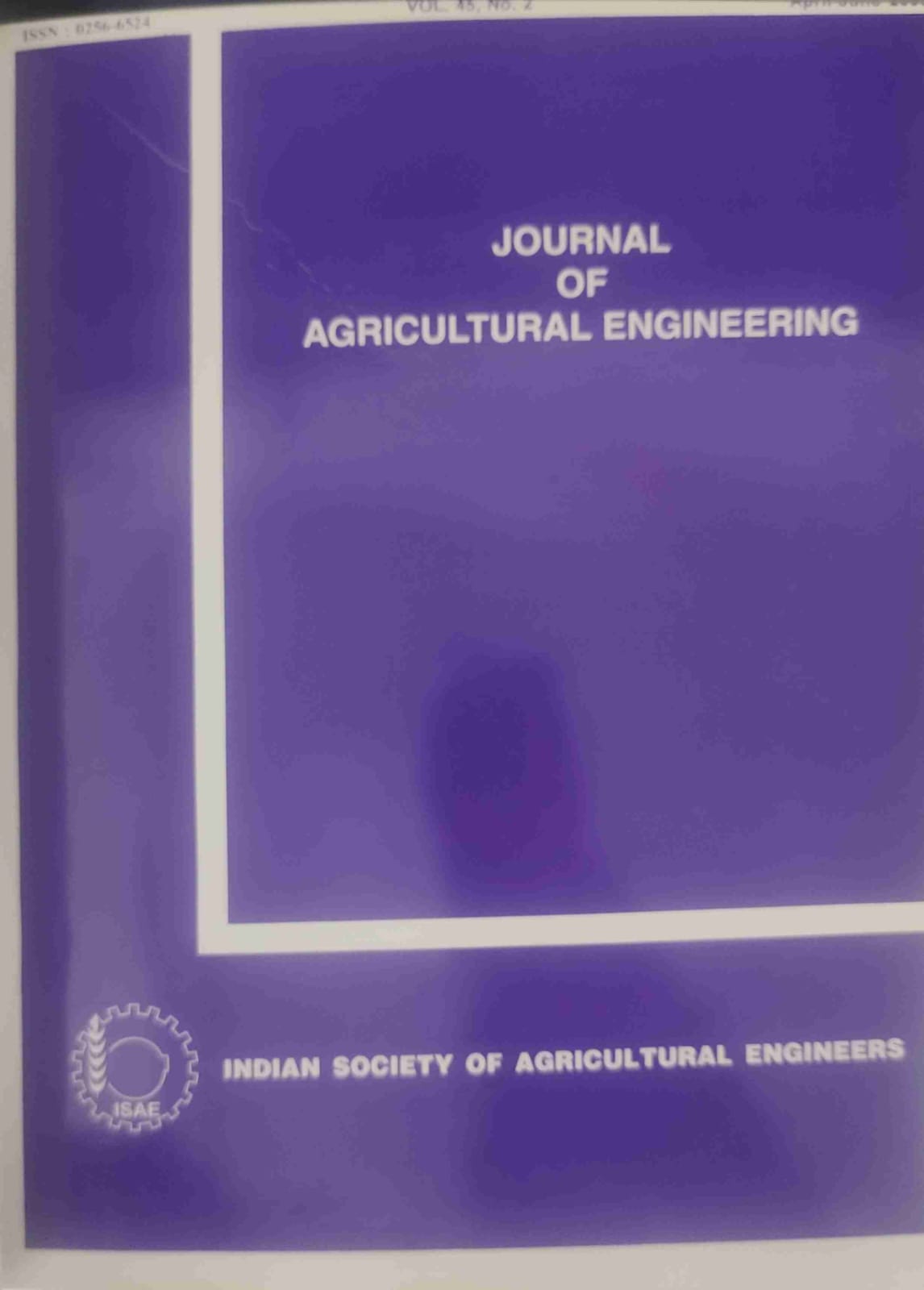Inter-Relationship Between Cooking Time and Some Physico Chemical Characteristics in Pigeon Pea (Cajanus cajan) Genotypes
DOI:
https://doi.org/10.52151/jae2008452.1329Abstract
Thirteen genotypes of pigeon pea were evaluated for their physical and physico-chemical characteristics, namely, seed size, seed volume, seed density, hydration capacity, hydration index, swelling capacity, swelling index and cooking time. Cooking time of whole pigeon pea pulse ranged between 51 and 63 min indicating a large variation. However, the cooking time of pigeon pea dhal ranged between 19 and 31 min. Correlation coefficients between seed weight and hydration capacity (0.77), seed volume and seed weight (-0.86) and that of swelling capacity and swelling index (0.90) were found to be significant at I% level. Alinear regression model was also fitted between the cooking time of whole pulse and other parameters under study. The coefficient of determination (R2 ) was observed as 81%. These inter-relationships amongst variables enable to predict the cooking time of whole pulse for a large number of pigeon pea genotypes.
References
Black R G; Singh U; CherylA.1998. Effect of varieties and processing on dehulling and cooking quality of field peas (Pisum sativum). J. Food Sci. Agric., 7, 251-258.
Manimekalai G; Neelakantan S; Annapan R S. 1979. Chemical composition and cooking quality of some improved varieties of redgram dhal. Madras Agric. J., 66, 812-816
Montgomery D C; Peck E A. 1982. Introduction to Linear Regression Analysis. John Wiley and Sons, New York
Narasimha H V; Desikachar H S R. 1978. Objective methods for studying cookability of tur pulse (Cajanus 65 JAE : 45(2) cajan) and factors affecting varietal differences in cooking. J. Food Sci. Technol., 15,47-50
Sharma Y K; Tiwari A S; Rao K C; Mishra A. 1977. Studies on chemical constituents and their influence on cookability in pigeonpea. J. Food Sci. Technol. 14, 38-40
Singh K B; Williams P C; Nakoul H. 1990. Influence of growing season, location and planting time on some quality parameters ofKabuli chickpea. J. Sci. Food Agric., 53,429-432
Singh U. 1999. Cooking quality of pulses. 1. Food Sci. Technol.,36, 1-14
Singh U; Kherdekar M S; Sharma D; Saxena K B. 1984. Cooking quality and chemical composition of some early, medium and late maturing cultivars of pigeon pea (Cajanus cajan L.). J. Food Sci. Technol., 21,367-372
Shivashankar G; Rajendra B R; Vijaykumar S; Sreekantaradhya. 1974. Variability for cooking characteristics in a collection of green gram. J. Fd. Sci. Technol., 11, 232-233.
SPSS 12.0. 2004. Guide to Data Analysis. SPSS Inc. Chicago III. Williams P C; Singh U. 1987. Nutritional quality and the evaluation of quality in breeding programme. In: Chickpea CAB International, Wallingford, UK.
Williams PC; Nakoul H; Singh K B. 1983. Relationship between cooking time and some physical characteristics in chickpea (Cicer arietinum L.) J. Sci. Food Agric., 34, 492-496.














